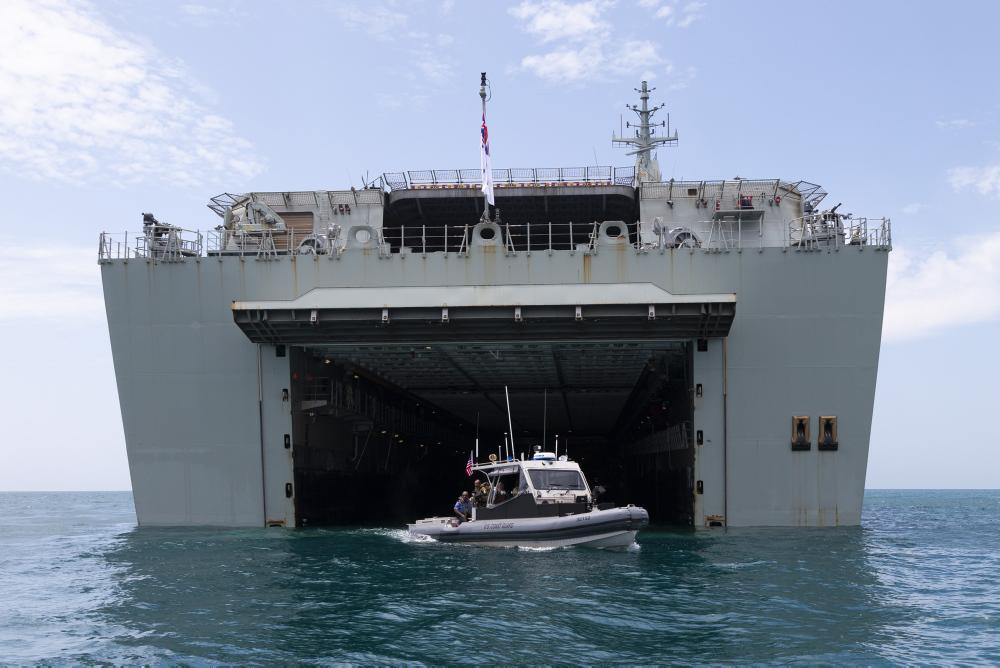
The first strategic priority for Australia in the Indo-Pacific is to manage great-power competition. And the central trend of that competition is the challenge to US dominance.
So says Australia’s defence minister.
Here’s Christopher Pyne describing the regional race:
We see today that the relationships between the great powers of the region are becoming more competitive. There are worrying signs of a return of ‘might is right’. That is just one of the reasons we regard the United States as our most important security partner. For decades, it has used its considerable power to sponsor rules and institutions that have benefited countries of all sizes and provided the stability that has allowed this region to grow into the engine room of prosperity and growth it is today. But the United States will find it increasingly difficult to provide this security unchallenged—and frankly we should not expect it to underwrite that security alone.
Australia’s responses, as listed by Pyne:
- Lift the defence budget to 2% of GDP by 2020–21, three years ahead of schedule: ‘the largest recapitalisation of our defence capability in peace time history, including the largest regeneration of Australia’s maritime capability’.
- Pursue stronger military-to-military relations ‘with a wide range of partners, new and old’.
- Enhance Australia’s military capability and presence in the region, ‘so we have good options to respond to a wide range of contingencies’.
- Reinforce the Pacific pivot (a headline description embraced by Pyne): ‘a generational realignment of our framework and support to the South Pacific’.
- Deal with the threat of terrorists coming to or returning to Southeast Asia from the Middle East.
The terrorism point is the category outlier. Everything else leans towards Pyne’s first priority—managing great-power competition. Cast your mind back to the way the previous decade was defined by terrorism. Talk about a shift in strategic focus.
The sense of a new era arriving is the launch point of the Regional security outlook 2019 from the Council for Security Cooperation in the Asia Pacific.
As Ron Huisken writes in the volume’s introduction, we face a change likely to have major and enduring consequences for stability and order: ‘the end of ambiguity and denial about whether the United States and China saw themselves as in an essentially adversarial contest for global preeminence’. He links a ‘decisive shift’ in America’s attitude to the judgement that ‘the challenge of adapting the global order to accommodate a powerful China is proving too hard’.
The US and China may yet surprise us with concessions and initiatives, Huisken writes, but the two states can no longer credibly assert that they have everything under control:
An overtly adversarial relationship between America and China is precisely the outcome that everyone has been seeking to avoid over the past 30 years. Such a development was first mooted in the late 1980s as a theoretical possibility suggested by history. Since the turn of the century, it has evolved from a detectable tendency into an increasingly probable outcome.
Giving the CSCAP view from Washington, Lindsey W. Ford reports on a sharp-edged US embrace of strategic competition:
Two years after President Trump’s election, most of the worst fears about what a Trump presidency might mean for Asia have not been realised. The United States remains engaged in the region, focused on maintaining alliance relationships, and committed to creating greater freedom and openness.
But the administration’s shift toward a more openly competitive US–China relationship suggests that US strategy may be on the precipice of a significant, and potentially longer-term, realignment.
From Shanghai, Zhong Zhenming says the US–China relationship is being transformed:
[A] vicious competition between China and the United States may lead to the two countries trying to please other countries in the Asia–Pacific region, and some will try to benefit from their strategic competition by playing one off against the other. The dynamics of great power competition will worsen the ecology of international relations in the region. China and the United States will find it costly to compete for allies, partners or friends. More importantly, some countries are likely to be victims of Sino-US competition as their national interests are discounted and priority given to power rivalry.
From Tokyo, Masayuki Tadokoro offers key questions being quietly debated in Japan: ‘Is the US still a reliable ally? How do we balance China and hedge against the erosion of the alliance?’ And in the classic Japanese manner, the professor’s article ends on those questions.
They’re good questions, though, as decision-makers and thinkers in Canberra would agree.
The new era of great-power competition has arrived. Now to work out how it’ll work and where it might go.